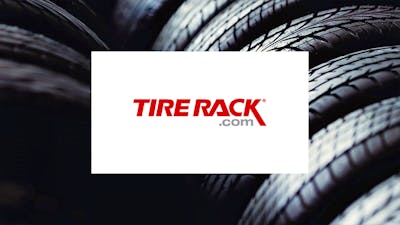Best Tires for the Ford Explorer
There are many great choices out there for excellent tires for your Ford Explorer. Yet which model is best will depend largely on you: how you drive, where you drive, and how much budget you have for replacements. The factory tires, while perfectly fine for the average driver, are sometimes not rugged enough for the adventurous Explorer owner.
Get the Best Deals on Tires
Making things more complicated are two more factors in Ford Explorer tires. One is wheel size, which on the Explorer ranges from the base model’s 18 inches to the 20- and 21-inch wheels found on other trim levels. Plus the fact that the Explorer is rear-wheel drive by default and four-wheel drive by option.
So we’ll break things down accordingly. Take a look at what we found.
Have an older Ford Explorer? See tire sizes for previous years.
Best Tires for the Ford Explorer with 18-inch wheels, RWD:
Hankook Kinergy GT - Best budget tire
- Low noise
- Comfort
- Winter traction
Cooper CS5 Ultra Touring - Best mid-priced tire
- Dry and wet traction
- Comfortable ride quality
- Winter traction
Michelin Premier LTX - Best superior tire
- Low noise
- Treadlife
- Dirt and mud performance
Best Tires for the Ford Explorer With 18-inch wheels 4x4:
Cooper CS5 Ultra Touring - Best budget tire
- Dry and wet traction
- Comfortable ride quality
- Winter traction
Falken Wildpeak A/T - Best mid-priced tire
- On and off-road performance
- Value
- Mud traction
Michelin Premier LTX - Best superior tire
- Low noise
- Treadlife
- Dirt and mud performance
Best Tires for the Ford Explorer With 20-inch Wheels (RWD or 4x4):
Laufenn S Fit A/S - Best budget tire
- Price
- Treadwear
- Availability
Goodyear Assurance Weatherready - Best mid-priced tire
- Dry and wet performance
- Winter traction
- Price
Pirelli Scorpion Verde All Season - Best superior tire
- Wet performance
- Winter performance
- Off-road performance
Best Tires for the Ford Explorer With 21-inch Wheels (4x4):
Bridgestone Dueler H/L Alenza Plus - Best budget tire
- Highway performance
- Wet weather traction
- Off-road performance
Pirelli Scorpion Verde All Season - Best mid-priced tire
- Wet performance
- Winter performance
- Off-road performance
Continental Crosscontact LX Sport - Best superior tire
- Comfort
- Low Noise
- Treadwear
Shop Tires Online and Save
Online tire prices are usually less than in store

What tires are on my Ford Explorer?
The current generation Explorer is sold in multiple trims with several tire sizes:
- The base model Explorer has a P255/65R18 tire sze on an 18-inch wheel. Original equipment are Hankook Kinergy GT tires.
- An upgraded 20-inch wheel size is standard on most Ford Explorer models. This wheel uses tires sized P255/55R20. Original equipment for this wheel size is the Michelin Primacy A/S Selfseal.
- The Explorer with 21-inch wheels has tires in size 275/56R21. The original tire for these models is the Pirelli Scorpion Zero All Season.
Top Replacement Tire Brands for Ford Explorer
The Ford Explorer has three wheel sizes and we’re recommending three tires for each of those sizes. Our recommendations are for either two-wheel or four-wheel drive models in each wheel size category. We start with a budget, give a moderately-priced, and finish with any price for the best available. All of our recommendations are winners in consumer surveys and ratings.
18-inch Tires for Ford Explorer
- Budget: Hankook Kinergy GT - These grand touring tires are all-season with a good mileage rating and stopping power rating.
- Moderately Priced: Cooper CS5 Ultra Touring - These all-season GT tires have a solid mileage rating and good stopping and temperature ratings as well.
- Cost-No-Object: Michelin Premier LTX - Like the others, these tires have excellent ratings all around, but also have one of the highest consumer ratings on the market.
20-inch Tires for Ford Explorer
- Budget: Laufenn S Fit A/S - These tires have good consumer review, a moderate tread life, and solid all-season credentials.
- Moderately Priced: Goodyear Assurance WeatherReady - These grand touring tires are all-seasons with excellent tread life and good stopping power. Notably, these all-weather tires are certified for severe snow duty and carry the three-peak mountain snowflake symbol.
- Cost-No-Object: Pirelli Scorpion Verde All Season - These highly-rated tires have good all around qualities including good tread life and excellent stopping. Pirelli offers versions of this tire that can run flat and others with noise canceling technology.
21-inch Tires for Ford Explorer
- Budget: Bridgestone Dueler H/L Alenza Plus - These are very highly-rated tires with good stopping power and temperature resistance, but have a low tread life expectation.
- Moderately Priced: Pirelli Scorpion Verde All Season - These have a good tread life rating and solid stopping power. Pirelli offers versions of this tire that can run flat and others with noise canceling technology.
- Cost-No-Object: Continental Crosscontact LX Sport - These have a lower tread expectation than do the Pirellis above, but much higher consumer ratings and plenty of on/off-road cred.
When Should You Replace Tires?
The great decider for tire replacement will be either mileage or time. Because most passenger vehicles average about 12,000 to 15,000 miles per year in usage and all tires are rated with five years of lifespan, it’s more likely that the mileage will be the deciding factor. But most consumers are not aware of the time factor.
Over time, the compounds that make up your Explorer’s tires begin to break down. Of these, the chemicals that provide UV protection and rubber solidity are the ones which generally break down the fastest. The lifespan for these is five years (a minimum federal requirement). As those compounds degrade, so will the capabilities of your tire, causing a safety concern. For this reason, all tires are required to be stamped with their date of manufacture.
That date is usually in raised lettering on the sidewall of the tire and takes the form of the letters “DOT” (for Department of Transportation, the entity which requires the stamp and sets the code parameters for it) and three sets of four numbers. The first two sets of numbers are the compound types and manufacturing location for the tire. The third set is the date code. The first two numbers are the week of the year in which the tires were made. The second two are the year itself. Tires with a date code of 4419, for example, were made in the 44th week of 2019 (October 28-November 3, 2019). The expiration date for these tires, therefore, is the 44th week of 2024.
The mileage milestone for a tire is different. There is no set point at which it clocks out based on miles driven. Instead, mechanics and tire techs use tread depth measuring tools to determine if a tire is still viable. The safety laws of many states have specifics on what that tread depth must be. Suffice it to say, the more tread depth there is, the better the tire. As a tire wears thin, however, its capabilities and properties begin to degrade as well. The question most consumers have is not whether their current tires need replacement, but how much they can expect out of the new tires they’re about to purchase.
The life of a tire can be broadly predicted by its Uniform Tire Quality Grade (UTQG) rating. The UTQG rating is usually found on sales brochures, online tire listings are reputable tire shops, and on any wraps or stickers that come with new tires. This rating will look like three numbers followed by two or three letters (e.g. 500 AA A).
- 500 - The three-digit number is the treadwear rating of the tire. These are self-imposed by the manufacturer and are not regulated, but the standard is fairly well-kept in the industry. This rating is based on a mileage test in which regular tread depth measurements are made in order to ultimately calculate the expected tread life of the tire. The higher the number, the better. These numbers roughly equate to total miles (500 means about 50,000 and so forth).
- AA - This is the traction rating for the tire and can be one letter or two. The rating measures the stopping power of the tire on wet pavement. The highest letter grade is AA, followed by A, B and C.
- A - The last letter is the heat rating for the tire. This is how well the tire stands up to extreme temperatures before degrading. Tires are rated with an A, B, or C with A being the highest.
As it happens, the above example rating is pretty close to the actual rating of the original equipment tires on a Ford Explorer equipped with 21-inch wheels. The Pirelli Scorpion Zero All Season tires have a 500 A A UTQG rating.
Most tires sold are equipped with wear bars between each tread. These bars are the absolute minimum amount of tread required for the tires to still be safely operated within their design parameters. Some tires will wear faster than expected and others will last longer than expected. The variances in driving styles, road types, and average speeds are all part of the variables that make up the real life tread wear for tires.
Are you heading out to check the UTQG code and date codes on your vehicle’s tires? It’s a good idea for you to do so.
Why Not Replace with Original Equipment Tires?
Most people replace their car or truck’s tires about every three or four years. It’s a relatively big investment all in one chunk, but it’s a part of vehicle maintenance. The original equipment tires that came with your Ford Explorer might have been great for you, but it’s worth looking at the UTQG code and checking how closely you managed to make that tread wear expectation at the very least. If your driving habits and the things you do with your Explorer are not the “average” that Ford aimed for in choosing OEM tires for your SUV, you may need to consider something different.
The other consideration for you may be budget and need. Perhaps safety or long tread life is your ultimate goal and price is secondary. Or perhaps price is more important than anything else. Or maybe there’s a great deal at the tire shop right now and you’d like to get in on it, but it’s only for a specific tire make and that’s not what came with your Explorer. Whatever the reason, there are plenty of considerations beyond just “this is what mine came with.”
Changing Ford Explorer Tire Sizes Whatever year and model of your Ford Explorer, you might be looking at switching things up a bit. The tires that came with or are currently on your Explorer are made to fit a specific wheel size. Yours may have 16-inch, 18-inch, or even 21-inch wheels. Or anything in between. The tire size fitting those wheels is also specific to that wheel size and your Explorer’s design.
Remember that, as a rule of thumb, the total diameter of your wheel and tire together should stay the same. If you plan to upgrade your wheels or change up the tire type you want, you will need keep that overall diameter. Thus if you upgrade the wheel’s size to something larger, you’ll need to downsize the tire’s sidewall to compensate and keep proportions the same.
Downsizing wheels has its advantages. Benefits include:
- Better ride quality – with more rubber, there’s more cushion between the vehicle and the roadway.
- Cost reduction – in general, the larger the wheel, the thinner the tire and thinner tires are more expensive.
- Seasonal changes – some need snow tires for the worst times of the year and not all snow tires are available in all wheel diameters.
- Off-road – larger sidewalls on smaller wheels also help cushion when off the road and allows for more inflation variance for better grip when off-pavement.
On the other side of the coin, going up in wheel size has its benefits:
- Better handling – thin profile tires have better road grip due to less play in the sidewall.
- Better looks – many believe that larger wheel diameters look better.
- Better braking – with lower sidewalls often comes wider tire tread, which aids in stopping power.
How to Read Tire Sizes
Tire sizes are an important part of the overall ratio and total diameter we’ve been talking about. The Explorer’s 21-inch wheel option, for example, comes with 275/45R21 110W tires. Let's dissect those numbers and learn what they mean:
- 275 - is the width of the tire’s tread in millimeters, so these tires are 275mm wide.
- 45 - is the aspect ratio of the tire’s height (sidewall) versus the width. These tires are 45 percent of their width in height. Making them 123.75mm tall (275 x .45).
- R - denotes that the tires are of radial construction, meaning there are radials running through the sidewall and below the tread to counteract the spinning forces and weight put on the tires as they roll. Most modern tires are radials.
- 21 - indicates the wheel diameter, in this case 21 inches.
- 110 - is the tire’s load rating in reference to an industry-standard chart of weights
- W - is the tire’s speed rating, referencing another industry-standard chart of speeds.
Most models of Ford Explorer made in the same year (or generation) will have similar aspect ratios as the wheel sizes expand or contract, giving them the same diameter no matter the wheel size. There are exceptions, of course, but it’s generally how manufacturers keep costs down and allow dealerships to upsell on larger wheels without requiring reprogramming of the Explorer’s speedometer and other sensors.
Tire sizes and aspect ratios are one thing, but tires also have titles which explain their uses. There are, in general, four types of tires broadly defined on the market. These are:
- Touring and/or All-season tires - aim to provide a smooth ride on paved surfaces, good wet/dry traction, and moderate winter traction. Most have longer tread life expectations as well.
- Performance tires - focus on, you guessed it, performance. They have high grip on paved surfaces and provide confident handling characteristics. The tradeoff is in winter performance and tread life, which are both usually less than Touring tires might provide.
- All-terrain tires - are made for off-road adventure and maximize traction when pavement may not be in the equation. These are road-worthy tires that compromise some tread life or ride quality in order to add good traction when not on a road.
- Winter and snow tires - use rubber compounds and tread patterns focused on maximizing traction in wet, snowy, and icy conditions. They usually have only moderate (at best) tread life, are loud on the roadway, and provide little comfort. They are purpose-built and are meant to be used just during the heaviest part of the winter season.
Tires Sizes By Year
| Year | Trim | Size |
|---|
Shop Tires Online and Save
Online tire prices are usually less than in store














